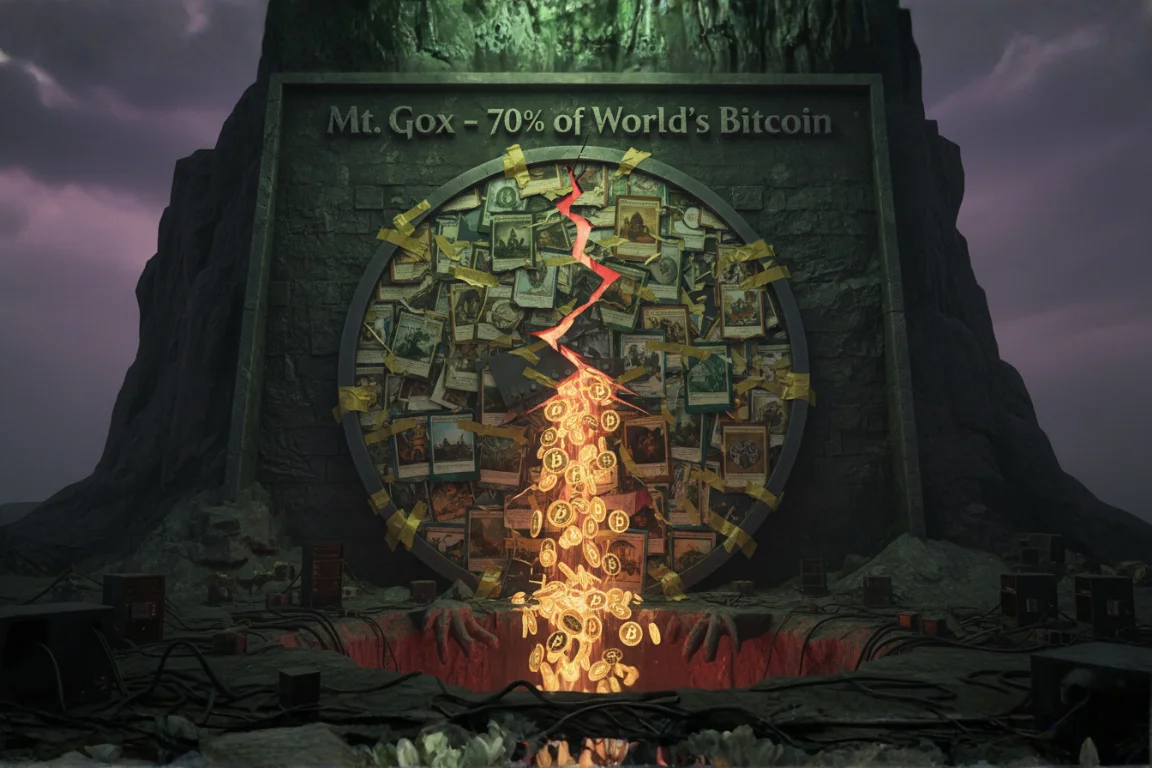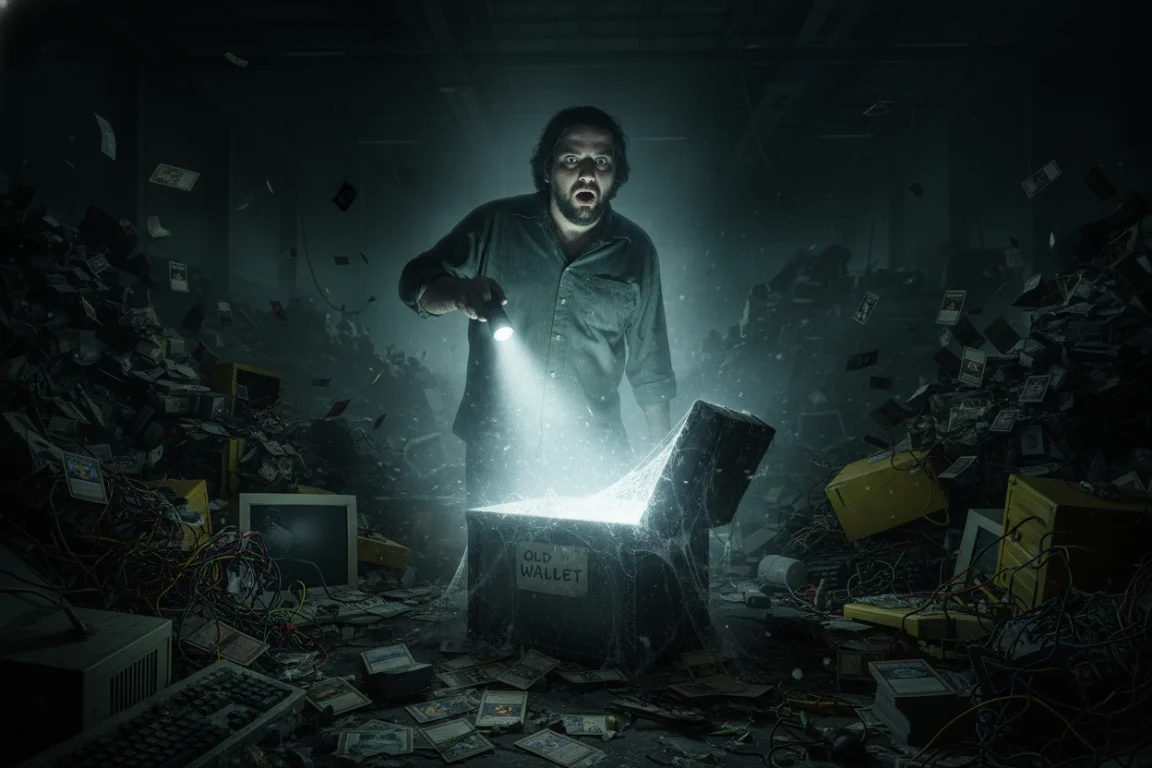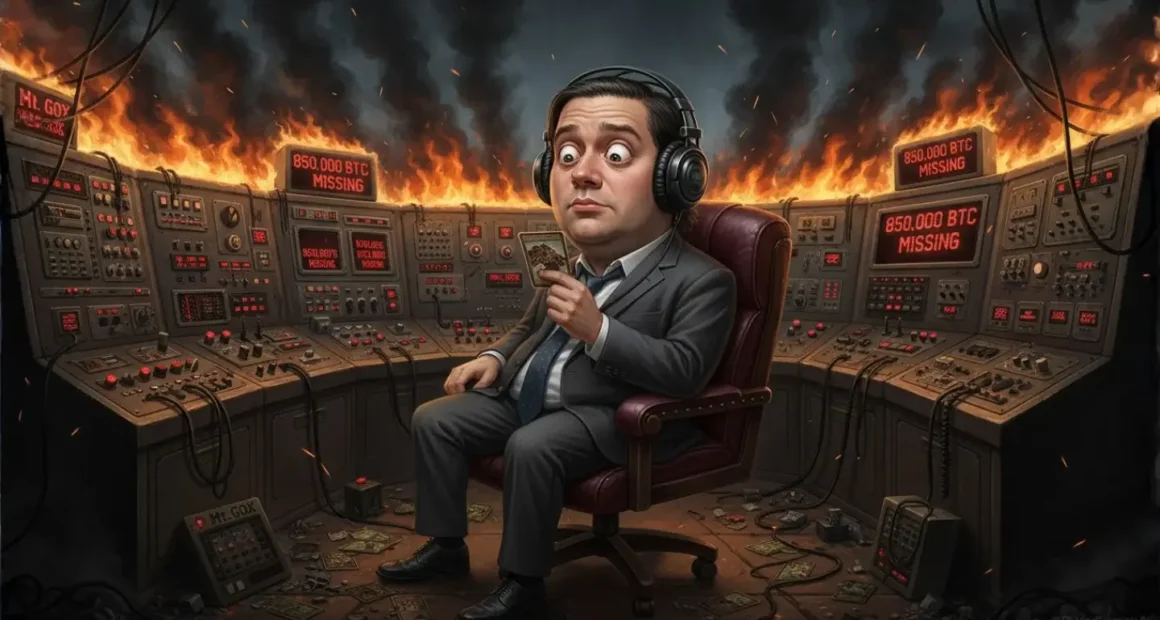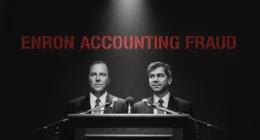The Day Bitcoin Died (The First Time)
February 24, 2014. Monday morning in Tokyo. Mark Karpeles, CEO of Mt. Gox, posted a short statement on the company’s website:
“Dear MtGox Customers, In the event of recent news reports and the potential repercussions on MtGox’s operations and the market, a decision was taken to close all transactions for the time being in order to protect the site and our users. We will be closely monitoring the situation and will react accordingly.”
Then, the entire website went offline. Additionally, all trading stopped. Furthermore, customer withdrawals froze. Moreover, the company’s Twitter account went dark.
850,000 Bitcoin—worth $450 million at the time—had vanished. This represented 7% of all Bitcoin ever created. Moreover, it belonged to 127,000 customers worldwide. And nobody could access it.
Within hours, panic spread globally. Mt. Gox handled 70% of Bitcoin trades. Therefore, its collapse threatened the entire ecosystem. Additionally, Bitcoin’s price crashed 36% in 24 hours. Furthermore, exchanges worldwide faced bank runs.
This is the Mt. Gox hack. The disaster that defined early crypto. Consequently, it created the phrase “not your keys, not your coins.” Meanwhile, it exposed how fragile the cryptocurrency infrastructure was. And it set a template for exchange collapses that continues today.
Let’s investigate how the world’s largest Bitcoin exchange lost everything and changed crypto forever.
The Beginning: From Magic Cards to Bitcoin
The Unlikely Origin
Mt. Gox started in 2006. But not as a Bitcoin exchange. Instead, it was a platform for trading Magic: The Gathering cards. The name literally meant “Magic: The Gathering Online eXchange.”
Jed McCaleb, a programmer from California, created the site. However, the Magic card trading never took off. Therefore, the domain sat mostly unused for years. Then in 2010, McCaleb discovered Bitcoin.
He saw an opportunity. Bitcoin needed exchanges. Moreover, buying Bitcoin was difficult. Furthermore, no major platforms existed. Consequently, McCaleb repurposed Mt. Gox for Bitcoin trading.
The launch was crude. Basic features only. Moreover, security was minimal. Additionally, the code was hastily adapted from the card trading platform. But it worked. And in early Bitcoin, working was enough.

Mark Karpeles Takes Over
In March 2011, McCaleb decided to sell Mt. Gox. The reason? He wanted to work on other projects. Additionally, running an exchange was complicated. Furthermore, regulatory concerns worried him.
Mark Karpeles, a French programmer living in Tokyo, bought Mt. Gox for an undisclosed amount (reportedly around $1,000 plus Bitcoin). He’d been running a web hosting company in Japan. Moreover, he loved Bitcoin’s potential. Additionally, he saw Mt. Gox as an opportunity.
Karpeles was 26 years old. He had no financial experience. Moreover, he had no security background. Furthermore, he had no business running a financial platform. But in 2011 Bitcoin, nobody did.
He made one critical mistake: He never audited the code he inherited. The platform he bought had fundamental security flaws. Moreover, these flaws had existed since the Magic card trading days. And they would eventually destroy everything.
The Rapid Growth
Mt. Gox grew explosively under Karpeles:
2011: Handling 80% of Bitcoin trades globally
2012: Processing $20 million monthly
2013: Trading volume exceeded $150 million monthly
Early 2014: Peak operations – $3 billion in annual trades
By 2013, Mt. Gox was the center of the Bitcoin universe. Every serious trader used it. Moreover, institutions began opening accounts. Additionally, the media treated Mt. Gox and Bitcoin as synonymous.
But beneath the growth, disasters were accumulating. Hacks had occurred. Moreover, money was disappearing. Furthermore, the platform’s code was crumbling. And Karpeles either didn’t notice or didn’t care.
The Warning Signs
June 2011: The First Hack
Just three months after Karpeles bought Mt. Gox, disaster struck. Hackers breached the exchange. They stole credentials for multiple accounts. Moreover, they crashed Bitcoin’s price to $0.01 on Mt. Gox by selling massive amounts.
Thousands of Bitcoins were stolen. The exchange rolled back trades. Additionally, they implemented new security. Furthermore, Karpeles promised it wouldn’t happen again.
But the fundamental problems remained. The code was still vulnerable. Moreover, private keys weren’t properly secured. Additionally, the database had critical flaws.
The Missing Bitcoin Problem
Throughout 2011-2013, strange things happened:
Customer Reports:
- Withdrawals took weeks
- Some withdrawals never arrived
- Balance discrepancies
- Support tickets ignored
Internal Issues:
- Database inconsistencies
- Unreconciled transactions
- Missing Bitcoin in wallets
- No proper accounting
Karpeles knew something was wrong. Internal documents later revealed he’d discovered discrepancies in 2011. However, he never conducted a full audit. Instead, he assumed the problems were minor bugs.
This was catastrophic negligence. Bitcoin was disappearing slowly. Moreover, it had been happening for years. By the time anyone noticed, 850,000 Bitcoin were gone.
The Banking Crisis
In 2013, Mt. Gox faced banking problems. U.S. authorities seized $5 million from accounts. The reason: Mt. Gox wasn’t registered as a money transmitter. Additionally, they’d misrepresented their business to banks.
Consequently, withdrawals became nearly impossible. Customers waited months. Moreover, many never received their money. Furthermore, customer support stopped responding.
These delays weren’t just bureaucratic. Instead, they masked a deeper problem: Mt. Gox didn’t have the money. The Bitcoin was already gone. Therefore, they tried to hide their insolvency.

The Collapse: February 2014
The Transaction Malleability Excuse
February 7, 2014. Mt. Gox suspended Bitcoin withdrawals. The stated reason: “transaction malleability” attacks. This was a technical issue where transaction IDs could be modified. Therefore, Mt. Gox claimed they couldn’t verify which withdrawals had been processed.
The crypto community accepted this explanation initially. Moreover, other exchanges reported similar issues. Additionally, Bitcoin developers acknowledged transaction malleability as a known bug.
But it was a lie. Transaction malleability didn’t cause Mt. Gox’s problems. Instead, the Bitcoin had been stolen years earlier. Karpeles was stalling to figure out what to do.
February 23: The Leaked Document
Someone leaked an internal Mt. Gox document titled “Crisis Strategy Draft.” The document revealed:
The Truth:
- 744,408 Bitcoin missing
- Years of undetected theft
- Complete insolvency
- No recovery plan
The document’s authenticity was uncertain. However, it caused panic. Consequently, Bitcoin’s price crashed. Moreover, other exchanges faced withdrawal runs. Additionally, the entire crypto market entered crisis mode.
February 24: The Shutdown
Monday morning, Mt. Gox went offline completely. The website showed a blank page. Moreover, the company’s social media went silent. Additionally, the Tokyo office was empty. Furthermore, Karpeles was unreachable.
Customers worldwide woke up to realize their Bitcoin was trapped. No access. No information. No communication. Just silence.
The Bitcoin community erupted. Reddit threads filled with horror stories:
- “My life savings are in Mt. Gox”
- “I have 1,000 Bitcoin stuck”
- “I was supposed to buy a house this week”
- “Everything I own is gone”
February 25: Karpeles Appears
Late Tuesday, Mark Karpeles released a video statement. He looked exhausted. Moreover, his voice shook. Additionally, he appeared close to tears.
“I’m sorry,” he said. “Bitcoin were stolen from the exchange. We don’t know exactly how or when. We’re investigating. We filed for bankruptcy protection.”
The details:
- 850,000 Bitcoin missing
- 100,000 belonged to Mt. Gox
- 750,000 belonged to customers
- Total value: $450 million
- Customers affected: 127,000
The Bitcoin community’s worst fears were confirmed. Moreover, the world’s largest exchange had lost everything. Furthermore, nobody knew who took it or how.
The Investigation
What Really Happened?
Investigators eventually pieced together the timeline:
The Theft:
- Started in 2011, possibly earlier
- Occurred gradually over the years
- Multiple methods used
- Total lost: 850,000 Bitcoin
Methods Identified:
1. The Hot Wallet Vulnerability: Mt. Gox kept most Bitcoin in “hot wallets”—connected to the internet. These were vulnerable to hacking. Moreover, private keys were stored insecurely. Consequently, hackers slowly drained them.
2. The API Exploit: The trading API had vulnerabilities. Hackers could manipulate balances. Additionally, they could trigger fraudulent withdrawals. Furthermore, the system didn’t verify properly.
3. The Inside Job Theory: Some evidence suggested insider involvement. Specifically, someone with database access. However, this was never proven conclusively.
4. The Transaction Malleability Cover: Real transaction malleability existed. But Mt. Gox exploited it as an excuse. Moreover, they claimed far more loss than malleability could cause.

The 200,000 Bitcoin Found
In March 2014, Mt. Gox announced finding 200,000 Bitcoin in an old wallet. This reduced the loss to 650,000 Bitcoin. However, questions emerged:
How did they “lose” 200,000 Bitcoin? Moreover, how did they “find” them weeks later? Additionally, why wasn’t this discovered during the initial assessment?
The discovery suggested incompetence more than theft. Karpeles simply didn’t know how much Bitcoin the exchange held. Furthermore, he’d never properly audited the systems.
Mark Karpeles Arrested (August 2015)
Japanese police arrested Karpeles 18 months after the collapse. The charges:
- Embezzlement
- Data manipulation
- Fraud
Specifically, they accused him of:
- Falsifying Mt. Gox data
- Stealing customers’ Bitcoin for personal use
- Manipulating the database to hide theft
He was held for nearly a year without bail. Japanese law allowed prolonged detention without charges. Moreover, interrogations lasted hours daily.
The Trial (2017-2019)
Karpeles went on trial in 2017. The prosecution argued:
- He embezzled Bitcoin
- He manipulated records
- He knew about theft and covered it up
- He lived lavishly on stolen funds
The defense argued:
- He was incompetent, not criminal
- The Bitcoin were hacked, not embezzled
- Database manipulation was to hide a hack, not theft
- His spending was from legitimate income
The Verdict (2019): Guilty of data manipulation. Not guilty of embezzlement. Sentence: 2.5 years, suspended. Essentially, he served no additional prison time.
The verdict was controversial. Moreover, victims felt justice wasn’t served. Additionally, many believed the real thieves escaped unpunished.
The Victims
Life Savings Destroyed
Adam Back, 35, UK: Lost 1,000 Bitcoin (worth $450,000 in 2014, $30 million today). “That was everything I’d mined and bought since 2010. My chance at financial freedom vanished overnight.”
Jesse Powell, 28, USA: Lost 600 Bitcoin. Later founded Kraken exchange specifically to create a trustworthy alternative to Mt. Gox.
Roger Ver, Early Bitcoin Investor: Lost tens of thousands of Bitcoin. “Mt. Gox nearly killed Bitcoin. Mark’s incompetence set the industry back years.”
The Suicide
At least one confirmed suicide is directly linked to Mt. Gox. A 28-year-old trader from China lost his entire investment. Moreover, he’d borrowed money to invest. Additionally, he faced massive debt.
He posted on a Bitcoin forum before taking his life: “Mt. Gox destroyed me. There’s no recovery. I’m sorry to my family.”
How many others suffered similar fates? Nobody knows. But the human cost extended far beyond money.
The Long Wait
Unlike modern bankruptcies, Mt. Gox recovery took a decade. Victims waited years for any information. Moreover, the process was agonizingly slow. Additionally, legal battles continued endlessly.
Many victims gave up hope. Some sold their claims to speculators for pennies on the dollar. Furthermore, others passed away before seeing any recovery.
The Recovery Process
The Bankruptcy (2014-2018)
Initially, Mt. Gox filed for bankruptcy protection. The plan:
- Liquidate all assets
- Distribute to creditors proportionally
- Close the case
Estimated recovery: 20-30 cents on the dollar. Moreover, victims would receive fiat currency, not Bitcoin. Additionally, the payout amount was calculated at 2014 Bitcoin prices.
The Rehabilitation (2018-Present)
In 2018, the case was converted to civil rehabilitation. Why? Bitcoin’s price had exploded. The 200,000 “found” Bitcoins were now worth billions. Therefore, there might be enough to repay all claims in full.
The Math:
- Owed: $450 million (at 2014 prices)
- Assets: 140,000 Bitcoin + 140,000 Bitcoin Cash
- 2021 value: $6+ billion
- Surplus: $5+ billion
This meant victims might recover 100% of their 2014-valued claims. However, they wouldn’t get back their actual Bitcoin. Instead, they’d receive fiat equivalent to 2014 prices.
The Controversy
This created a massive controversy:
Victims’ Argument: “I lost 10 Bitcoin. Today, that’s worth $300,000. But I’ll only get $4,500? That’s insane!”
Legal Argument: “Your claim was filed at 2014 prices. That’s what bankruptcy law requires. You get $450 per Bitcoin, not the current value.”
The Surplus Problem: After paying all claims at 2014 prices, billions in surplus remained. Who gets it? Shareholders (including Karpeles) were legally entitled. Victims were outraged.
The 2024 Payouts Begin
In July 2024—10 years after the collapse—payouts finally began. Victims started receiving fiat currency equivalent to their 2014 claims. However:
- Most received 30-40% of the 2024 Bitcoin value
- Process remained slow
- Many victims had died
- Tax implications were brutal
The recovery was technically “successful.” Yet emotionally, it felt like another theft. Because early Bitcoin believers had lost not just money, but a fortune in appreciation.

The Impact on Crypto
“Not Your Keys, Not Your Coins”
Mt. Gox created the cryptocurrency’s most important phrase. The lesson: If you don’t control the private keys, you don’t own the Bitcoin. Moreover, exchanges can lose, steal, or freeze your assets anytime.
This principle reshaped crypto:
- Hardware wallets became essential
- Self-custody became standard advice
- Exchange risk was finally acknowledged
- Cold storage became the industry standard
Exchange Security Evolution
Post-Mt. Gox, exchanges transformed:
New Standards:
- Proof of reserves
- Cold storage for most funds
- Insurance policies
- Regular audits
- Multi-signature wallets
- Transparency reports
Exchanges that couldn’t prove security died quickly. Moreover, those who could thrive. Additionally, the bar for launching exchanges rose dramatically.
Regulatory Pressure
Mt. Gox gave regulators ammunition:
Arguments Used:
- “Exchanges are unregulated and dangerous”
- “Consumers need protection”
- “Cryptocurrency enables theft”
- “Industry needs oversight”
Consequently, regulations tightened globally. Moreover, exchanges faced licensing requirements. Additionally, KYC/AML became mandatory. Furthermore, many countries banned or restricted crypto.
The Unsolved Mystery
Who Took the Bitcoin?
Despite investigations, nobody knows for certain who stole 650,000 Bitcoin. Theories include:
Theory 1: Russian Hackers. Evidence suggests organized Russian cybercrime groups. Moreover, blockchain analysis traced some Bitcoin to Russian wallets. Additionally, the sophistication matched known hacking groups.
Theory 2: Inside Job. Someone with database access. Possibly an employee. Moreover, potentially Karpeles himself. However, no conclusive proof exists.
Theory 3: Multiple Attackers. Various hackers over the years. No single entity took everything. Instead, slow bleeding by many actors.
Theory 4: Lost, Not Stolen. Some Bitcoin was genuinely lost due to incompetence. Private keys misplaced. Wallets forgotten. Pure negligence, not theft.
The truth? Probably a combination. Multiple vulnerabilities exploited by various actors over the years..
The Bitcoin That Moved
Blockchain analysis shows some stolen Bitcoin moved years later. In 2018 and 2020, dormant wallets were activated. Moreover, Bitcoin flowed through mixers. Additionally, some appeared on exchanges.
This suggested thieves were cashing out. However, most Bitcoin remained untouched. Either:
- Thieves died/lost keys
- Waiting for higher prices
- Can’t cash out without detection
- Bitcoin genuinely lost
850,000 Bitcoin worth $25+ billion today. And most of it sits frozen in digital wallets nobody can access.
Lessons from Mt. Gox
Red Flags to Watch
Mt. Gox showed warning signs:
Withdrawal Delays: When exchanges slow or stop withdrawals, they’re likely insolvent. Leave immediately.
Poor Communication: No updates, ignored support tickets, vague explanations—all signs of problems.
Regulatory Issues: Banking problems, seized funds, license troubles—the exchange might be failing.
No Audits: Exchanges refusing proof of reserves are hiding something. Demand transparency.
Hot Wallet Storage: Exchanges keeping most funds in hot wallets are vulnerable. Demand cold storage proof.
Protection Strategies
1. Use Self-Custody Hardware wallets for significant holdings. Keep private keys offline. Control your assets.
2. Minimize Exchange Time. Only keep funds on exchanges while actively trading. Withdraw immediately after.
3. Diversify Platforms. Never keep all crypto on one exchange. Spread risk across multiple platforms.
4. Verify Proof of Reserves. Use exchanges that provide regular, audited proof of reserves. Verify independently.
5. Check Insurance. Some exchanges offer insurance. Understand coverage limits and exclusions.
6. Stay Small. Don’t store more on exchanges than you can afford to lose. Remember: it can disappear instantly.
Where They Are Now
Mark Karpeles: Living in Tokyo. Works in blockchain technology. Avoided significant prison time. Remains a controversial figure. Many victims believe he escaped justice.
The 650,000 Bitcoin: Mostly unrecovered. Some traced but unmovable. Worth $19+ billion today. Probably lost forever.
Mt. Gox Victims: Some received payouts starting in 2024. Most got a fraction of the current Bitcoin value. Many are financially ruined. Some died before recovery.
The Surplus: Billions in leftover Bitcoin after paying claims. Legal battles continue over distribution. Karpeles might receive hundreds of millions as a shareholder.
Bitcoin: Survived and thrived. Mt. Gox could have killed cryptocurrency. Instead, it strengthened the ecosystem through learned lessons.
Exchange Industry: Transformed completely. Modern exchanges are far more secure, regulated, and professional than Mt. Gox era.
The Final Truth
Mt. Gox was cryptocurrency’s first major disaster. Moreover, it revealed how fragile early infrastructure was. Additionally, it exposed how easily incompetence destroys billions.
Mark Karpeles wasn’t a criminal mastermind. Instead, he was an incompetent programmer running a financial platform without proper expertise. Moreover, he failed to implement basic security. Furthermore, he ignored warning signs for years.
But here’s the truly horrifying part: It could have been prevented. Security experts warned Mt. Gox about vulnerabilities. Moreover, best practices existed. Additionally, proper auditing would have caught problems early.
Karpeles simply didn’t care enough. Or more accurately, he didn’t know enough to care. And 127,000 people paid the price.
Ten years later, victims are finally receiving payouts. However, they’re getting 2014 prices in a 2024 world. Moreover, many lost life-changing fortunes. Furthermore, some died waiting.
The real lesson isn’t about Bitcoin’s security. Instead, it’s about trusting humans with your assets. Because exchanges are run by people. Moreover, people make mistakes. Additionally, people can be negligent, incompetent, or criminal.
“Not your keys, not your coins” isn’t just advice. Rather, it’s the fundamental truth of cryptocurrency. Everything else is trust. And trust is expensive.
Mt. Gox proved this in the most brutal way possible.
850,000 Bitcoin. Gone. Most likely forever. Worth $25 billion today. And sitting somewhere in digital wallets that nobody can access.
The greatest heist in history. And we’ll probably never know who did it.
That’s the Mt. Gox legacy.
Resources
[1]Tokyo District Court 2014 (fu) No. 3830 Bankrupt Entity
Related reading(suggested)
[1]Bitconnect Ponzi: Complete Timeline of $2.4 Billion Scam
[2]Celsius Network bankruptcy: Why 1.7 Million Users Lost Everything
[3]Luna Collapse: How Terra Destroyed $60 Billion in 3 Days
[4]FTX Bankruptcy: Sam Bankman-Fried’s $8 Billion Fraud Breakdown









